Class 4 Exam > Class 4 Notes > Social Studies Class 4 ICSE > Chapter Notes: Timeline and Calendars
Timeline and Calendars Chapter Notes | Social Studies Class 4 ICSE PDF Download
Introduction
In this chapter, we will learn about timelines and calendars. A timeline helps us know the order of events, like what happened first and what happened later. Calendars tell us about dates, days, months, and years. We will also learn about different types of calendars, like the Gregorian and Saka calendars, and how they are used to mark important events in history.
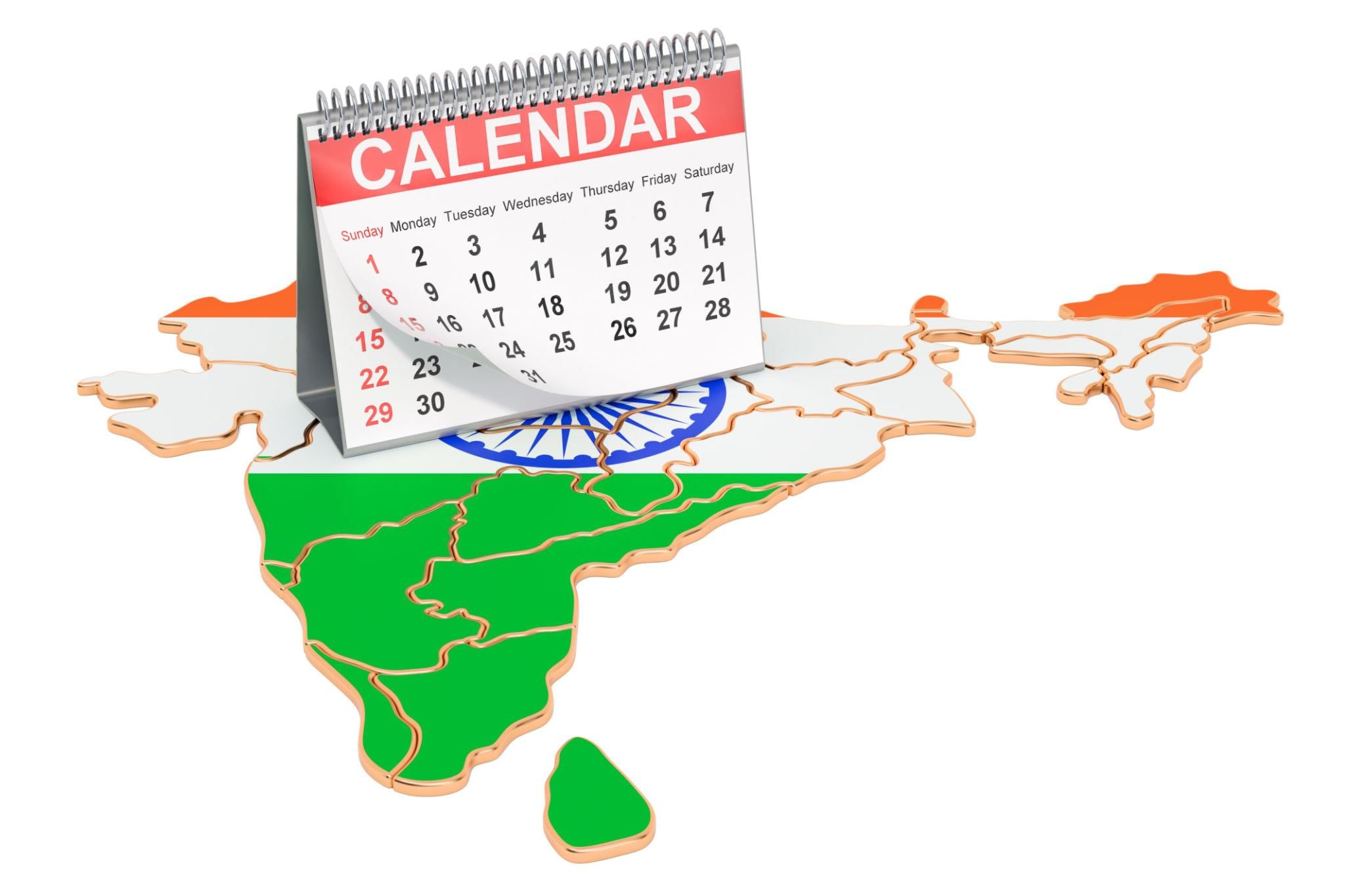
Timeline
- We need to know dates to understand what happened and when it happened.
- Arranging dates in the correct order is called sequencing.
- When we put events in order from the earliest to the latest, it is called a timeline.
- A timeline helps us understand the order of events in history easily.
Timeline of Important Events in India
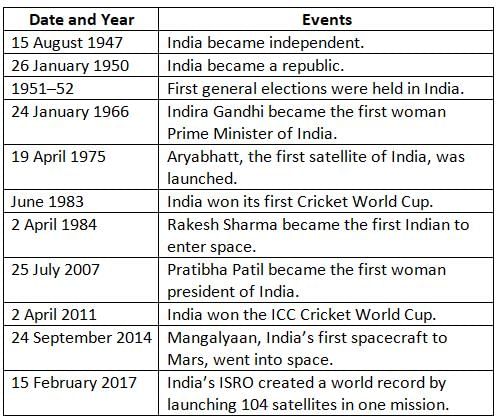
Special Terms for Time Periods

- When we study history, we talk about events that happened over many years.
- We use special terms to count years in history so it is easy to understand:
- The first 100 years, from year 1 to year 100, are called the 1st century.
- The next 100 years, from year 101 to year 200, are called the 2nd century.
- The next 100 years, from year 201 to year 300, are called the 3rd century.
- Historians use special words to mark years: BC, BCE, AD, and CE.
- The birth of Jesus Christ is a very important event in history.
- The year Jesus Christ was born is marked as AD 1.
- AD stands for "Anno Domini," which means "In the year of our Lord."
- BC stands for "Before Christ."
- BC is used for the years before Jesus Christ was born.
- AD is used for the years after Jesus Christ was born.
- For example, 200 BC means 200 years before Jesus Christ was born.
- And 200 AD means 200 years after Jesus Christ was born.
- The dates on a timeline move backward before the birth of Christ. So, 200 BC comes before 100 BC because it is earlier.
- The dates move forward after the birth of Christ. So, 200 AD comes after 100 AD because it is later.
- We also use special words for different time periods:
- 10 years is called a decade.
- 100 years is called a century.
- 1000 years is called a millennium.
- Nowadays, historians use new words: BCE and CE instead of BC and AD.
- BCE means "Before Common Era," and it is used instead of BC.
- CE means "Common Era," and it is used instead of AD.
Fun Fact
There is no year 0 in history. So, the year 1 BC is followed by the year 1 AD. When writing, BCE is always written before the year, like BCE 200. But BC is written after the year, like 200 BC.
Question for Chapter Notes: Timeline and CalendarsTry yourself: What does AD stand for?View Solution
Calendar and Almanac
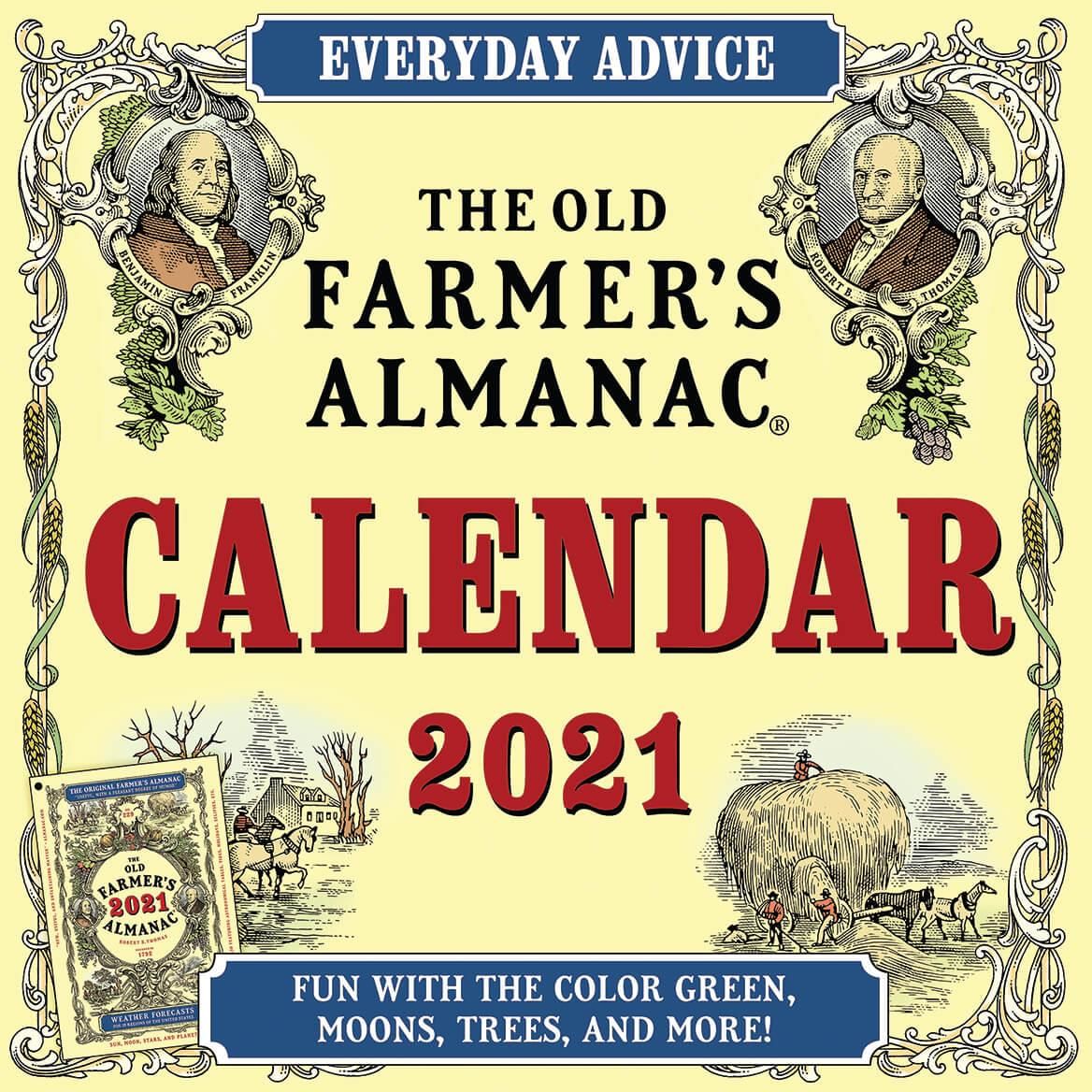
- A calendar helps us know about dates, days, weeks, months, and years.
- We use calendars to mark events like festivals, holidays, and official events in a year.
- An almanac is a special calendar that has information for specific groups of people.
- Farmers, sailors, and astronomers use almanacs to know about the sun, moon, tides, and weather.
- A school almanac is different and has information about school events, competitions, and picnics.
History of Calendars
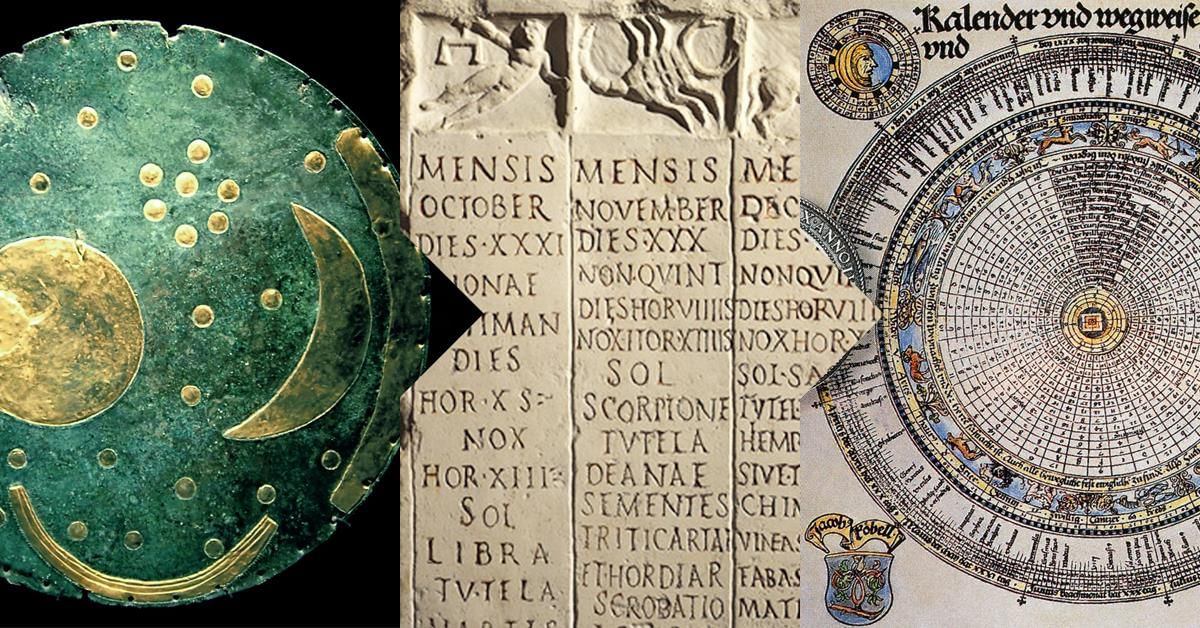
- In the past, calendars were based on the movement of the sun and moon.
- Some people added or removed days to match the seasons.
- Over time, many new calendars were made.
The Gregorian Calendar
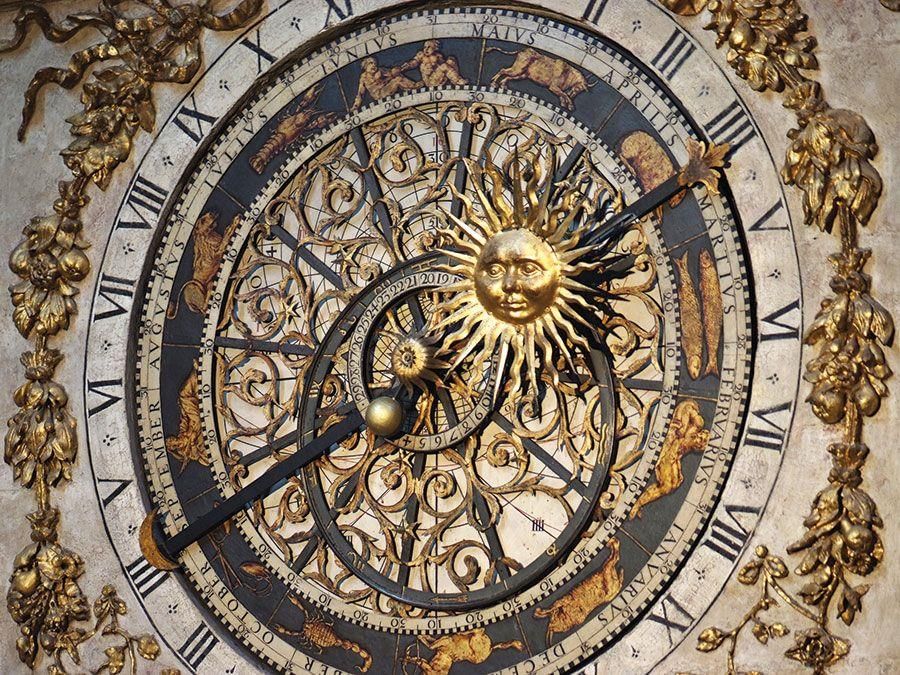
- The Gregorian calendar is the most commonly used calendar today.
- It was introduced by Pope Gregory XIII in October 1582 CE.
- Pope Gregory revised the earlier Julian calendar.
- In the Julian calendar, a year had 365 days divided into 12 months.
- Every fourth year was a leap year, where an extra day was added to February.
- In the Gregorian calendar, a year also has 365 days divided into 12 months, but December is the last month.
- The Gregorian calendar also adds an extra day in a leap year.
- A year is not exactly divisible by 400 in the Gregorian calendar.
- For example, the years 1600 and 2000 are leap years, but 1700, 1800, and 1900 are not leap years.
The Saka Calendar
- The Saka calendar is the national calendar of India.
- It is used by the Government of India along with the Gregorian calendar.
- Chaitra is the first month of the Saka calendar.
- The first day of Chaitra is usually on 22 March, but in a leap year, it is on 21 March.
Indian National Calendar
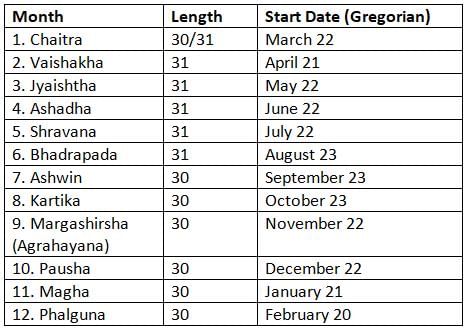
Fun Fact
- The Julian calendar, introduced around 45 BCE by the Roman emperor Julius Caesar, was followed in Rome and all over Europe and Africa for more than 1500 years.
- It was revised by Pope Gregory XIII in 1582 CE.
- The Saka Era, on which the Saka calendar is based, started in AD 78.
Differences between Gregorian and Saka Calendars
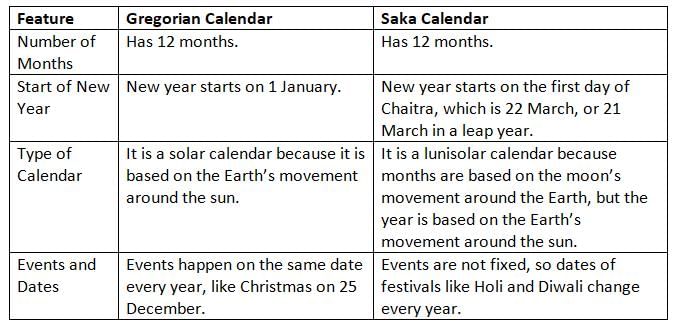
Question for Chapter Notes: Timeline and CalendarsTry yourself: What is a major difference between the Gregorian and Saka calendars?View Solution
Points To Remember
- Timelines help to arrange historical events in order and make the study of history easier.
- The birth year of Jesus Christ is marked as AD 1.
- BC is used to mark the years before the birth of Christ, and AD is for the years after the birth of Christ.
- Historians now use the terms BCE and CE instead of BC and AD.
- The dates on a timeline either move backward in the period before the birth of Christ or forward in the period after his birth.
- A calendar helps us to know the days, weeks, and months of the year.
- An almanac is a special calendar providing information about dates and events for specific groups.
- Pope Gregory XIII introduced the Gregorian calendar in 1582 CE.
- In India, the Saka calendar is followed along with the Gregorian calendar.
Glossary
- Timeline: A list of events arranged in the order they happened, from the earliest to the latest.
- Sequencing: Putting dates or events in the correct order.
- Century: A period of 100 years, like 1 to 100 years is the 1st century.
- Decade: A period of 10 years.
- Millennium: A period of 1000 years.
- BC: Stands for Before Christ; used for years before the birth of Jesus Christ.
- AD: Stands for Anno Domini, meaning "In the year of our Lord"; used for years after the birth of Jesus Christ.
- BCE: Stands for Before Common Era; used instead of BC for years before the birth of Jesus Christ.
- CE: Stands for Common Era; used instead of AD for years after the birth of Jesus Christ.
- Calendar: A tool that shows dates, days, weeks, months, and years to mark events like festivals.
- Almanac: A special calendar with information for specific groups, like farmers or sailors, about the sun, moon, and weather.
- Gregorian Calendar: The most commonly used calendar today, introduced by Pope Gregory XIII in 1582 CE.
- Saka Calendar: The national calendar of India, used with the Gregorian calendar by the Government of India.
- Lunisolar Calendar: A calendar where months are based on the moon’s movement, but the year is based on the sun’s movement, like the Saka calendar.
- Solar Calendar: A calendar based on the Earth’s movement around the sun, like the Gregorian calendar.
The document Timeline and Calendars Chapter Notes | Social Studies Class 4 ICSE is a part of the Class 4 Course Social Studies Class 4 ICSE.
All you need of Class 4 at this link: Class 4
|
43 docs|16 tests
|
FAQs on Timeline and Calendars Chapter Notes - Social Studies Class 4 ICSE
| 1. What is the Gregorian Calendar and how does it differ from other calendars? |  |
Ans. The Gregorian Calendar is the calendar system currently most widely used around the world. It was introduced by Pope Gregory XIII in 1582 to correct inaccuracies in the Julian Calendar. The main difference lies in the leap year system and the way months are structured, which helps align the calendar year with the solar year more accurately.
| 2. What is the Saka Calendar and where is it primarily used? |  |
Ans. The Saka Calendar is a lunisolar calendar used in India and some Southeast Asian countries. It is based on the positions of the sun and moon and has its own set of months and years that differ from the Gregorian Calendar. It is often used for civil purposes in India and marks the beginning of the year with the month of Chaitra.
| 3. What are the key differences between the Gregorian and Saka Calendars? |  |
Ans. The key differences include their structure and starting points. The Gregorian Calendar has 12 months with specific days, while the Saka Calendar has 12 months with varying lengths based on lunar cycles. Additionally, the Gregorian Calendar starts from the year of Christ's birth, whereas the Saka Calendar starts from the year 78 AD.
| 4. Why is it important to understand different calendars? |  |
Ans. Understanding different calendars is important for various reasons, including cultural awareness, historical context, and accurate scheduling of events. Different communities may celebrate festivals or historical events based on their unique calendars, and knowing these differences helps in fostering respect and understanding among diverse cultures.
| 5. What are some activities to learn about timelines and calendars for Class 4 students? |  |
Ans. Some engaging activities include creating a personal timeline of their life events, comparing significant historical events on both the Gregorian and Saka calendars, and making a calendar for a specific month using either calendar system. Such activities help students visualize and better understand the concept of time and its representation.
Related Searches
















